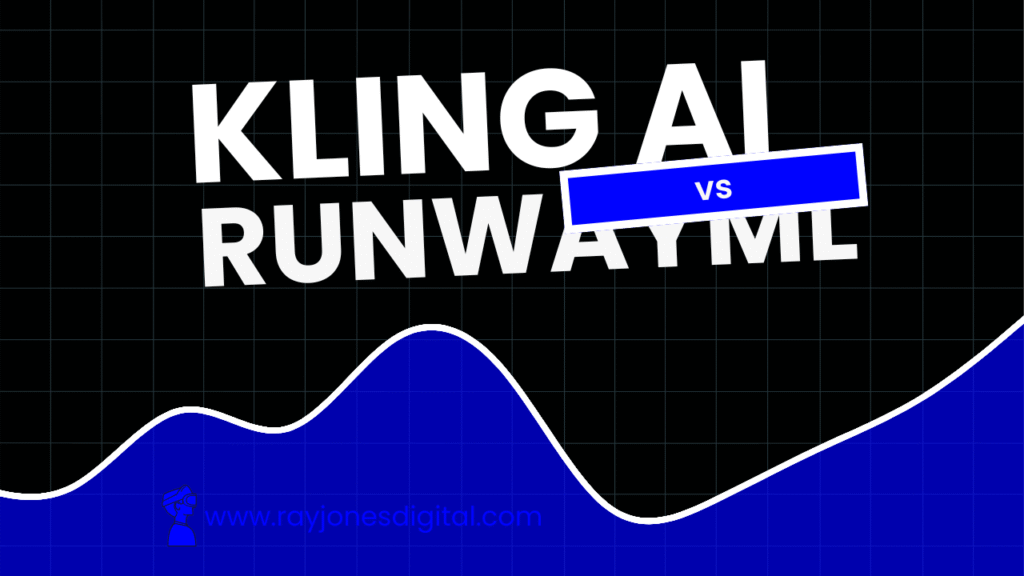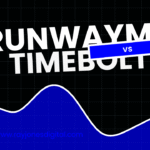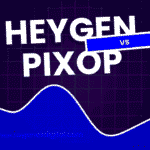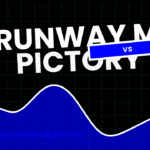
The AI video generation landscape has exploded with innovation, and two platforms have emerged as frontrunners: Kling AI vs RunwayML. Both promise to revolutionise how we create video content, but which one delivers the best results for your specific needs?
This comprehensive comparison will examine everything from video quality and ease of use to pricing and features. By the end, you’ll have a clear understanding of which platform suits your creative workflow and budget.
What is Kling AI?
Kling AI is a text-to-video generation platform developed by Kuaishou Technology. Launched in 2024, it quickly gained attention for producing remarkably realistic video content from simple text prompts.
The platform specialises in creating short-form videos with impressive motion dynamics and visual fidelity. Users can generate videos up to 10 seconds long, with the AI handling complex movements, lighting, and scene transitions automatically.
Kling AI’s strength lies in its ability to understand nuanced prompts and translate them into coherent video sequences. Whether you’re describing a bustling city street or a serene mountain landscape, the AI interprets your vision with surprising accuracy.
What is RunwayML?
RunwayML has established itself as a pioneer in AI-powered creative tools. Originally launched as a broader AI platform, it has evolved into a comprehensive suite focusing heavily on video generation and editing.
The platform offers multiple video creation modes, including text-to-video, image-to-video, and video-to-video transformation. RunwayML’s Gen-2 model has been particularly praised for its versatility and professional-grade output quality.
Beyond video generation, RunwayML provides additional creative tools like AI image editing, audio processing, and collaborative features. This makes it appealing to professional studios and creative teams seeking an all-in-one solution.
Video Quality Comparison
Resolution and Visual Fidelity
Both platforms produce high-definition content, but their approaches differ significantly. Kling AI excels at creating photorealistic scenes with natural lighting and textures. Its videos often exhibit a cinematic quality that’s particularly impressive for AI-generated content.
RunwayML offers more control over visual style and aesthetics. Users can fine-tune parameters like motion intensity, style consistency, and temporal coherence. This flexibility makes it popular among professional video editors who need precise control over their output.
Motion and Animation
Kling AI demonstrates superior performance in complex motion sequences. The platform handles fluid movements, crowd dynamics, and natural physics with remarkable consistency. Characters walk naturally, water flows convincingly, and objects interact realistically with their environment.
RunwayML provides more predictable motion patterns, which can be advantageous for certain projects. Its motion algorithms prioritise stability over complexity, resulting in smoother but sometimes less dynamic movements.
Temporal Consistency
Both platforms struggle with temporal consistency—maintaining visual coherence across frames. However, Kling AI shows better performance in this area, with fewer jarring transitions and more stable object appearances throughout the video duration.
RunwayML’s temporal consistency varies depending on the content type. Simple scenes maintain coherence well, whilst complex multi-object scenes may exhibit flickering or morphing issues.
Ease of Use and Interface
User Experience
Kling AI prioritises simplicity with a clean, intuitive interface. Users input text prompts and receive videos within minutes. The platform requires minimal technical knowledge, making it accessible to beginners and non-technical users.
RunwayML offers a more sophisticated interface with extensive customisation options. The learning curve is steeper, but experienced users appreciate the granular control over generation parameters and post-processing options.
Prompt Engineering
Both platforms benefit from well-crafted prompts, but they respond differently to various input styles. Kling AI performs better with descriptive, narrative prompts that paint a vivid picture of the desired scene.
RunwayML excels with technical, precise prompts that specify camera angles, lighting conditions, and movement patterns. It’s particularly responsive to film terminology and cinematographic language.
Processing Speed
Kling AI typically generates videos faster than RunwayML, with most clips ready within 2-3 minutes. The platform’s optimised infrastructure handles multiple requests efficiently, even during peak usage periods.
RunwayML’s processing time varies based on complexity and selected parameters. Simple generations complete within 3-5 minutes, whilst complex scenes with multiple elements may take 10-15 minutes.
Features and Capabilities
Video Length and Format Options
Kling AI supports video generation up to 10 seconds in length, with standard HD resolution output. The platform focuses on short-form content optimised for social media and quick presentations.
RunwayML offers more flexibility with video lengths up to 18 seconds and various resolution options. It supports multiple export formats and provides advanced encoding options for professional workflows.
Creative Control
RunwayML provides extensive creative control through its parameter adjustment system. Users can modify style intensity, motion blur, frame interpolation, and colour grading directly within the platform.
Kling AI offers limited customisation options, focusing instead on delivering high-quality results with minimal user intervention. This approach works well for users who prefer simplicity over control.
Integration and Workflow
RunwayML integrates seamlessly with popular creative software like Adobe Premiere Pro, After Effects, and DaVinci Resolve. This makes it valuable for professional video production pipelines.
Kling AI operates as a standalone platform with basic export options. Whilst it lacks extensive integration features, its simplicity makes it easy to incorporate into various workflows.
Pricing and Accessibility
Cost Structure
Kling AI operates on a credit-based system with competitive pricing for individual users. The platform offers free trials and affordable monthly plans suitable for content creators and small businesses.
RunwayML provides tiered subscription plans ranging from individual creator accounts to enterprise solutions. Its pricing reflects the platform’s professional positioning and comprehensive feature set.
Value for Money
For users prioritising video quality and simplicity, Kling AI offers excellent value. The platform delivers professional-looking results at a fraction of traditional video production costs.
RunwayML justifies its higher pricing through versatility and professional features. Studios and agencies often find the investment worthwhile due to the platform’s comprehensive capabilities.
Free Trial and Limitations
Both platforms offer free trials, but with different limitations. Kling AI provides a generous free tier with reasonable usage limits, making it accessible for experimentation and small projects.
RunwayML’s free tier offers limited generations but unrestricted access to features. This allows users to fully evaluate the platform’s capabilities before committing to a subscription.
Use Cases and Applications
Content Creation
Kling AI excels for social media content, marketing videos, and educational materials. Its ability to generate engaging short-form content makes it popular among influencers and digital marketers.
RunwayML serves professional video production, film pre-visualisation, and commercial advertising. Its advanced features and integration capabilities make it suitable for complex creative projects.
Professional vs Amateur Use
Professional video editors often prefer RunwayML for its comprehensive toolset and integration options. The platform’s learning curve is offset by its powerful capabilities and professional output quality.
Amateur creators and content enthusiasts gravitate towards Kling AI for its simplicity and impressive results. The platform democratises video creation by removing technical barriers whilst maintaining quality output.
Strengths and Limitations
Kling AI Advantages
Kling AI’s primary strength lies in its exceptional video quality and user-friendly interface. The platform consistently produces visually impressive content with minimal user input, making it ideal for quick content creation.
The realistic motion dynamics and natural physics simulation set Kling AI apart from competitors. Complex scenes with multiple moving elements maintain coherence and believability throughout the generation process.
Kling AI Limitations
The platform’s customisation options are limited compared to professional alternatives. Users seeking specific visual styles or technical control may find Kling AI restrictive.
Video length limitations and format restrictions can be challenging for certain projects. The 10-second maximum duration may not suit all content requirements.
RunwayML Advantages
RunwayML’s versatility and professional features make it suitable for diverse creative projects. The platform’s integration capabilities and advanced controls appeal to experienced video professionals.
The comprehensive toolset extends beyond video generation, providing additional value through image editing, audio processing, and collaborative features.
RunwayML Limitations
The learning curve and complexity may intimidate casual users. The platform’s extensive options can be overwhelming for those seeking simple, straightforward video generation.
Higher pricing and subscription requirements may limit accessibility for individual creators and small businesses with tight budgets.
Making the Right Choice for Your Needs
Choosing between Kling AI and RunwayML depends on your specific requirements, technical expertise, and budget constraints. Consider your primary use cases and evaluate which platform aligns better with your creative workflow.
For content creators prioritising quality and simplicity, Kling AI offers an excellent starting point. Its impressive output quality and user-friendly interface make it accessible to users regardless of technical background.
Professional video editors and creative teams may find RunwayML’s comprehensive features and integration capabilities more valuable. The platform’s versatility justifies its complexity and higher pricing for demanding projects.
Both platforms continue evolving rapidly, with regular updates and feature additions. Consider starting with free trials to experience each platform’s capabilities firsthand before making a long-term commitment.
The Future of AI Video Generation
The competition between Kling AI and RunwayML represents broader trends in AI video generation. As these platforms continue developing, we can expect improvements in video length, quality, and creative control.
The democratisation of video creation through AI tools will likely transform content production across industries. Both platforms contribute to this evolution, albeit through different approaches and target audiences.
Understanding these tools’ capabilities and limitations helps creators make informed decisions about incorporating AI into their workflows. The key lies in matching platform strengths with specific project requirements and creative goals.

I am Ray Jones Digital
My current occupations: a Digital Marketer, Local SEO expert, Link Builder, and WordPress SEO specialist. Shopify SEO, Ecommerce Store Management, and HTML & WordPress Developer I have been practicing the above mentioned services for more than 10 years now As an SEO expert working with your ongoing projects.



